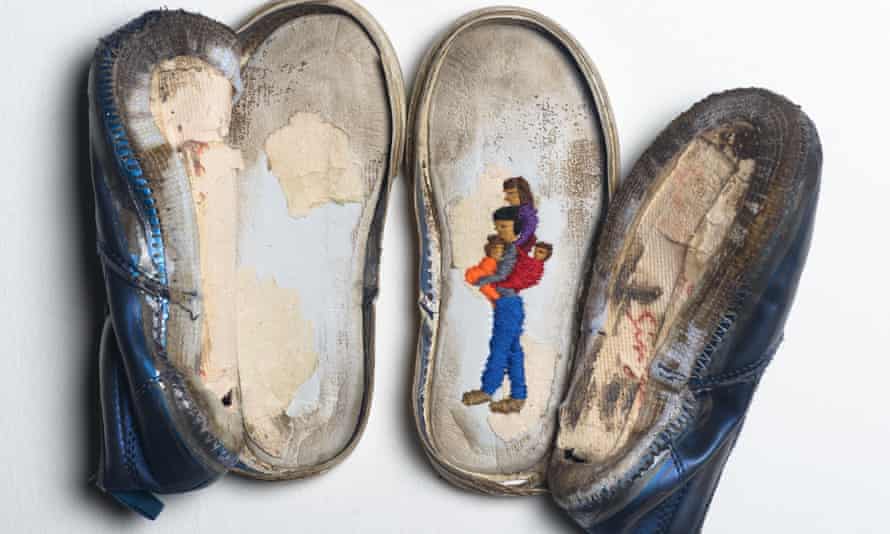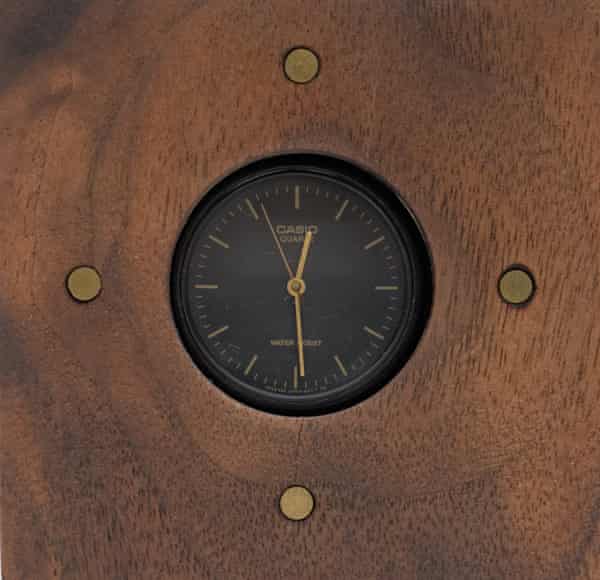Back for good: the fine art of repairing broken things

When Aldous Huxley wrote Brave New World in 1932, he portrayed a society in which the importance of discarding old clothes was whispered into the ears of sleeping children (“Ending is better than mending. The more stitches, the less riches”) – so vital was the imperative to drive consumption of the new. He set his novel 600 years into the future, but later suggested that its “horror may be upon us within a single century”. He wasn’t far off.
Product life spans are getting shorter – one UK-based fashion company advises buyers to work to quality standards that assume a dress will stay in its owner’s wardrobe for less than five weeks. And it’s not just clothes: household appliances can be cheaper to replace than repair, with spare parts often available only if harvested from retired machines. Something as simple as a depleted battery frequently spells the end for today’s hermetically sealed electronic devices, and even attempting a repair can render warranties invalid.
But a new law – the “right to repair bill” – has just come into force, aiming to end the “built to break” cycle by requiring that manufactures make spare parts and maintenance information available for their products. The intention is to overcome built-in obsolescence, enable repairs and extend lifespans. The government now expects white goods to last for up to a decade, rather than the seven-year average reported by the Whitegoods Trade Association.
But campaigners, such as the co-founder of the Restart Project, Janet Gunter, argue that the measures don’t go far enough. “This has been widely reported as ‘problem solved’, but the rules only apply to lighting, washing machines, dishwashers and fridges – and they only give spare parts and repair documentation to professionals,” she says. “We want to see ecodesign legislation applied to other hard-to-repair tech products and offer the right to repair to everyone.”
Today, artists and designers are leading the way in exploring what mending really means. They might not be offering to fix your broken toaster, but through exploring the practice of repair, they are laying the groundwork for new ways of thinking about the objects we surround ourselves with. Perhaps we can move away from the veneration of newness that is exemplified by unboxing videos on YouTube, and instead learn to celebrate the storied patina that comes with care and repair.
Aya Haidar

Mending is a metaphor for Aya Haidar. Her Recollections series comprises photographs of war-damaged buildings in Beirut into which she stitches multicoloured embroidery thread to “repair” the bullet holes. “It was about filling in these voids – these holes that are scars, remnants and traces of something that is dark, ugly and traumatising, and filling it with something colourful and joyful,” she says.
Her Lebanese family fled the war in 1982, moving first to Saudi Arabia and then London. “For my family, those damaged buildings remind them of something terrifying, but something that does need to be remembered.”
By embellishing and filling the cracks with beautiful, colourful threads, she emphasises them, so the war that caused them is not forgotten. Haidar’s work focuses on found and recycled objects and explores themes such as loss, migration and memory. In the Soleless Series, she embroidered images of migrants’ journeys on to the soles of their worn-out shoes. “The shoes physically carried refugees across borders and across lands,” she says. “They were so worn and torn that they were not fit for purpose, but instead of throwing them away, I embroidered images of their journeys on to their soles, adding another layer of meaning. I couldn’t return the function to those shoes, but I could tell their story and show their value.”
Haidar runs youth workshops for refugees and uses craft as a way to help them process traumatic experiences. “The physical act of mending works towards an emotional repair,” she says. “Because craft is slow, considered, repetitive and thoughtful, the women who take part in my workshops are left with their own thoughts and the time to process them in the flow of making. It is a solitary process, but also a collective experience. The conversations that come out of the workshops are very real, very honest, very raw. There is a beautiful sense of healing that starts to happen.”
Jay Blades

For Jay Blades, presenter of the BBC’s Repair Shop, mending is about community. Described by the BBC as “a heartwarming antidote to throwaway culture”, the programme sees members of the public bring broken objects to a barn in the grounds of the Weald and Downland Living Museum, get them fixed, and take them away again.
“On paper, it doesn’t sound that interesting,” laughs Blades. Yet 7 million people tune in to every episode. The secret of its unlikely success is perhaps found in its origin story. Katy Thorogood, creative director of production company Ricochet, took a chair that had belonged to her late mother to be reupholstered. When the upholsterer handed her a framed sample of the original fabric as a keepsake, she simultaneously burst into tears and had the idea for her next TV show.
“The upholsterer didn’t need to do that, but he did it simply because it was a kind thing to do,” says Blades. “What makes The Repair Shop so special is its community – its love. It’s about doing something kind for someone that you don’t know.”
That’s a theme that runs through Blades’s own story. He established Out of the Dark with his then-wife, Jade, in High Wycombe in 2000 to enable disadvantaged young people to learn practical skills from the last generation of furniture makers in the area. “It was about turning furniture that someone had written off into something desirable and explaining to young people the connection between that and giving them the skills they needed to go into a job interview with their heads held high.”
When that project came to an end due to the perfect storm of cashflow problems and the end of his marriage, it was again the community that stepped in. He had been living in his car for a week when a friend offered him a job and a place to stay – and he’s been living with that friend’s family ever since. Having got back on his feet, he was already running Jay & Co, his own furniture-restoration business, when the BBC came calling. “Of course, The Repair Shop is a celebration of craft skills, but at its heart, it’s about caring for people by repairing the things that matter to them,” says Blades.
Chris Miller

For Chris Miller, restoration is a direct response to the climate crisis. Skinflint, the vintage lighting website he co-founded, specialises in sourcing lighting from the 1920s to the 1970s, usually from hospitals, churches or factories. The company has saved 50,000 lights from landfill, making them safe and functional and then giving them what Miller calls a “light touch” restoration, maintaining the patina of their age.
The decision to source mainly industrial lights is about availability and volume, and his chosen era is bookended by the advent of mainstream electric lighting in the 1920s and the introduction of plastics in the 1970s.
“Churches were the first to be electrified and we still salvage 1920s church lights, because they have had quite an easy life – they’re only used once a week and they tend to be quite high up,” he explains. “After the 1970s, you start to see planned obsolescence and failure engineering, and the effects of engineers handling a material they didn’t fully understand.”
So far, so pragmatic, but it was actually a tragic personal experience that motivated the decision to set up an environmentally driven business. Miller was in Sri Lanka when the tsunami hit the country on 26 December 2004. “Ordinarily, we make travel up as we go along, but on this occasion, we had booked various places in advance – and that’s what saved our lives,” he says. On 24 December, he and his wife reluctantly left the waterside hut they’d been staying in and moved inland to a pre-booked jungle lodge for Christmas Day. Just 48 hours later, the tsunami destroyed those waterside huts, taking the lives of many of the people they’d been with just days before. It was a wake-up call.
“We all experience signpost moments,” he says. “Most we miss, some we see but don’t act upon, and some just hit us smack in the face. We left our jobs in London and moved to Cornwall with a three-month-old baby. Skinflint was launched two years later.”
For Miller, “the key driver for our business is the environment – we can’t go on the way we have for the last 100 years. The resources are just not there.”
Bridget Harvey

Former artist-in-residence at the Victoria and Albert Museum in London, Bridget Harvey might actually offer to fix your toaster – alongside her artistic practice, she is the co-organiser of Hackney Fixers, a community group modelled on the Dutch Repair Cafe initiative that pairs the owners of broken things with volunteers who can mend them. But her work as an artist is concerned with what we make, how we make it, and why that matters.
“What I’m interested in is how we move through the world, how we interact with objects, and whether their repair is embraced, rejected, or something in between – it is all a really interesting window into how we think, how society operates and how objects define us.”
Her work spans clothing, ceramics, and objects that embrace both. Blue Jumper 2012-2019 is about to join V&A’s permanent collection as part of their fashion galleries curated around garment lifecycles, but it began life as a second-hand woollen jumper in Harvey’s own wardrobe. When it got damaged by moths, she carried on wearing it, darning the holes in contrasting colours. When moths got it again, she simply kept darning it, and kept wearing it, describing herself as the “disobedient owner of a disobedient garment”.
Her Mend More jumper is a more direct statement – made as a placard for a climate march, the navy-blue sweater is emblazoned with the words “Mend More Bin Less” on one side and “Mend More Buy Less” on the other, which she appliqued on, making each letter from left over yellow fabric scraps.
Kintsuglue Plate 2019 is a commentary on the increasing popularity of the deliberately visible Japanese repair technique, kintsugi. Instead of using the traditional urushi lacquer and gold powder, she has used a Kintsuglue – a copycat product emulating Sugru, a mouldable “glue” that can be manipulated like Plasticine for 30 minutes until it sets. With these layers of influences, and not having designed or fabricated the plate nor the Kintsuglue herself, Harvey is exploring notions of authorship within repaired objects. In other pieces, she has patched a blanket with tin cans, and bridged the gap between two halves of a broken bowl with a beadwork section, rendering it repaired but useless. She is playing at the fringes of repair, asking us to question when something is truly broken and when it is really mended.
Hans Tan

Singapore-based designer, educator and curator Hans Tan wants to champion the role of repair in contemporary design. “In most Asian cultures, mending is seen as something you do only when you can’t afford to replace something,” he says. “Buying new is important as a symbol of prosperity – and mending is not seen as a profession. I want to reposition repair as an aspirational activity that can generate inspirational outcomes.”
He has started to do that through R is for Repair, an exhibition at the National Design Centre, Singapore, earlier this year. Commissioned by DesignSingapore Council, the exhibition proposed that one way to reduce the 0.74 kg of waste the World Bank estimates we each generate every day, is through extending the lives of objects we might otherwise throw away. Tan invited 10 members of the public to submit broken objects and paired them with 10 contemporary designers. Tan gave Tiffany Loy – a Singaporean artist trained in industrial design and textile-weaving – a Calvin Klein tote bag that Arnold Goh bought with his first pay cheque. Once his pride and joy, it had developed holes and been relegated to use as a grocery bag. Loy flipped the bag inside out, taking advantage of the undamaged lining, and added a cord mesh – both to strengthen it and to form a handy external pocket.

Hunn Wai and Francesca Lanzavecchia, co-founders of Lanzavecchia + Wai, were given a $15 watch with a broken strap that held sentimental value for its owner. “We are both quite romantic designers – we seek to re-humanise situations and objects and bring about new behaviours, so we were really happy to be given a timepiece to work on,” says Wai. “A watch is a powerful object – it has a lot of narratives and unwittingly becomes part of your identity over a period of time. Even though this was a cheap watch, it was well made and still working.”
They encased the mass-produced timepiece in a bespoke walnut case with brass fixings aligned to the quarter-hour, turning it into a precious clock. “Commonly, we perceive sustainable practice as something that comes with inconvenience, cost or sacrifice,” says Tan. “But sustainability can be articulated and practised in an attractive, purposeful way – and as designers we are uniquely placed to reposition repair as aspirational. We want to end up with something that is incrementally, if not fundamentally, better than the original, so people might see repair, not as an inconvenience, but as something they love to do.”
Circular with Katie Treggiden is a podcast exploring craft, design and sustainability. Download Season Two for more conversations with the makers, menders, fixers and hackers challenging the linear “take-make-waste” model